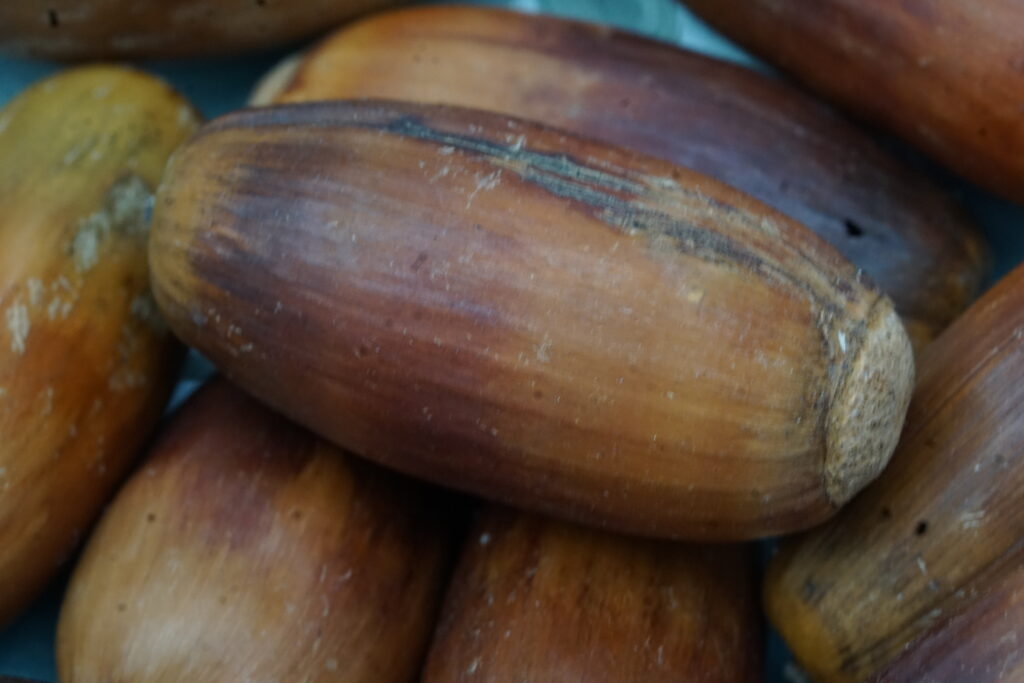Quercus cerris (Turkey oak)
Quercus cerris grows up to 200 years old and reaches heights of up to 35 meters. The trunk grows up to 2 meters thick.
The acorns ripen relatively early (September to October) and grow up to 3 cm long. They usually sit in a spiny cupule. Originally they are found in southern France, southeastern Europe (e.g. Albania, Bulgaria) and Italy. Through artificial plantings also exist many specimens in England, New Zealand and Argentina. In Central Europe, this tree species is a common park tree. In southern Europe it is one of the most common forest trees.
The leaves are dark green in summer and turn yellowish or reddish in autumn. It is considered to be resistant to urban climates. The flowers of the cercia are green-red. The flowering period is from April to May. As a deciduous tree, it loses its leaves in winter.
As a site, this oak species prefers warm and nutrient-rich soils. It grows on both calcareous and acidic silicate rock. Nevertheless, the distorting oak likes it best alkaline. The more calcareous the soil substrate, the better it tolerates drought. However, dry sandy soils are an exclusion criterion. The wood is very suitable for building (e.g. for railroad sleepers) or also as firewood. The acorns are often used as pig feed. The juice that comes out after bark injury can be made into syrup and used as a sugar substitute. Quercus cerris is very robust against wind and heat. Even air pollution and road salt do not seem to bother her. It is also quite resistant to pests. Oak processionary moth or oak splitting beetle have it with this plant heavy.
See also https://de.wikipedia.org/wiki/Zerreiche
When young, Quercus cerris grows up to 30 cm per year.
In the current “temperate” zones, the cedar is considered the tree of the future against global warming. It tolerates two to three months of summer drought. Very well it can be grown as a pot plant (in very deep pots), moreover, it is very frost hardy. It tolerates temperatures down to – 20 degrees.
For sale are the acorns here in the store




